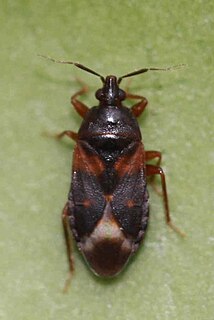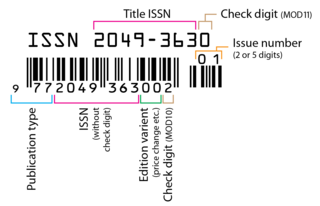Tetraphleps is a genus of minute pirate bugs in the family Anthocoridae. There are about 10 described species in Tetraphleps.

Anthocorini is a tribe of minute pirate bugs in the family Anthocoridae. There are about 7 genera and at least 30 described species in Anthocorini.

Ceratocapsus is a genus of plant bugs in the family Miridae. There are more than 130 described species in Ceratocapsus.
Gnathobleda is a genus of assassin bugs in the family Reduviidae. There are at least four described species in Gnathobleda.

Scoloposcelis is a genus of minute pirate bugs in the family Lyctocoridae. There are about seven described species in Scoloposcelis.
Zeluroides is a genus of assassin bugs in the family Reduviidae. There are at least two described species in Zeluroides.

Microtomus is a genus of assassin bugs in the family Reduviidae. There are about 10 described species in Microtomus.
Diaditus is a genus of assassin bugs in the family Reduviidae. There are about six described species in Diaditus.
Brachysteles is a genus of minute pirate bugs in the family Lyctocoridae. There are at least three described species in Brachysteles.
Elatophilus is a genus of minute pirate bugs in the family Anthocoridae. There are about 15 described species in Elatophilus.
Leptopharsa is a genus of lace bugs in the family Tingidae. There are more than 120 described species in Leptopharsa.
Temnostethus is a genus of minute pirate bugs in the family Anthocoridae. There are about eight described species in Temnostethus.

Oriini is a tribe of minute pirate bugs in the family Anthocoridae. There are about 6 genera and more than 60 described species in Oriini.
Coccivora is a genus of minute pirate bugs in the family Anthocoridae. There is one described species in Coccivora, C. californica.
Metatropiphorus is a genus of damsel bugs in the family Nabidae. There are at least four described species in Metatropiphorus.

Buchananiella is a genus of minute pirate bugs in the family Lyctocoridae. There are at least three described species in Buchananiella.
Elatophilus inimicus is a species of minute pirate bug in the family Anthocoridae. It is found in North America.
Melanocoris is a genus of minute pirate bugs in the family Anthocoridae. There are at least four described species in Melanocoris.

Lyctocoridae is a family of bugs, formerly classified within the minute pirate bugs of the family Anthocoridae.











